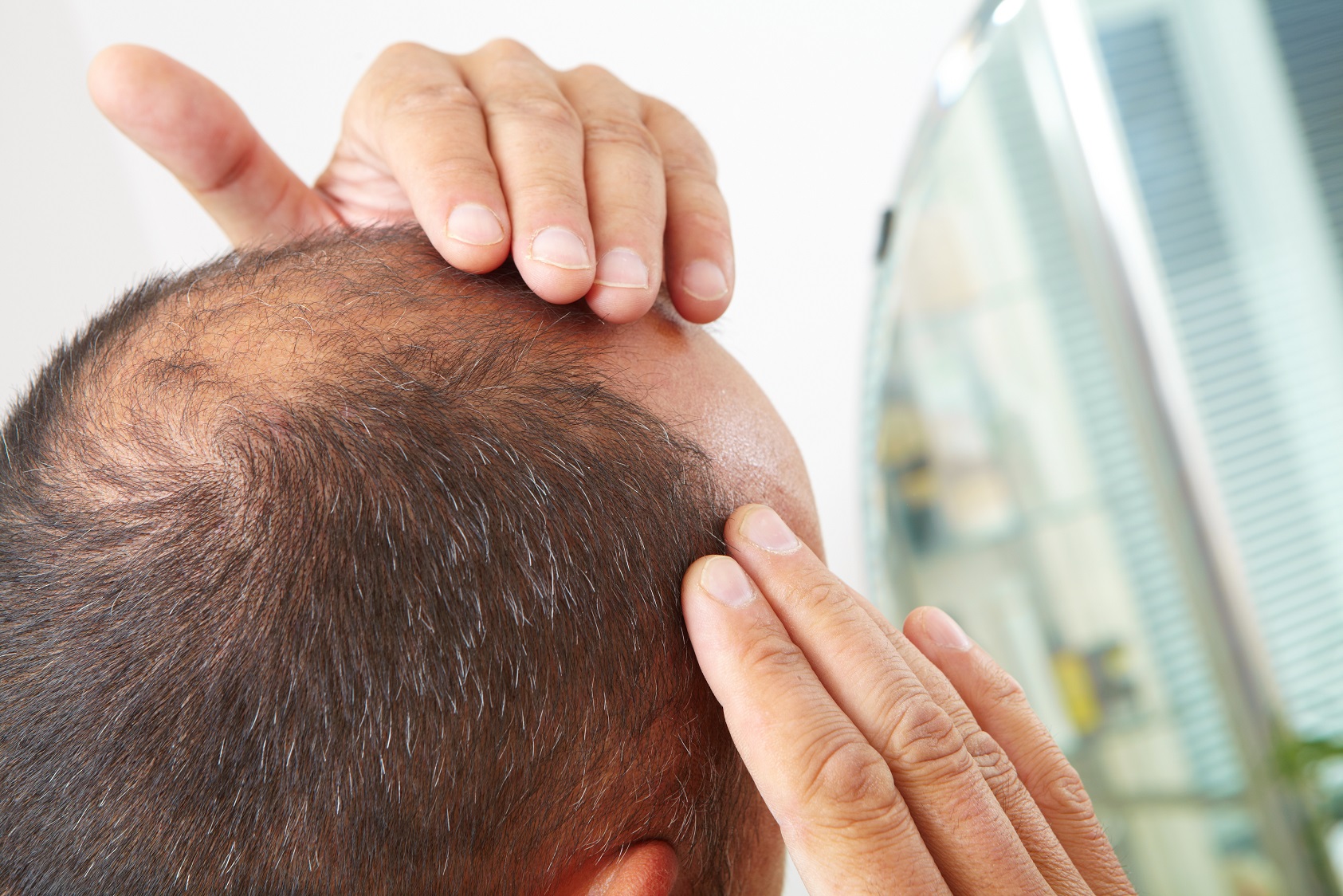PRP hair restoration is now available at Skin Spectrum

Hair loss is often an avoided topic of conversation, as the general belief is that nothing can be done. Not only is hair loss distressing to the patient for cosmetic reasons, but can lead to feelings of embarrassment and decreased self-confidence. Recent developments in the treatment of hair loss have opened new doors. Platelet Rich Plasma (PRP) is a promising treatment for hair loss secondary to age-related hormone depletion (Androgenic Alopecia) and some autoimmune conditions (Alopecia Areata). Skin Spectrum is excited to offer this innovative, safe treatment.
Hair transitions through three cycles: anagen, catagen, and telogen. Anagen is the cycle during which hair grows; therefore, the length of hair is determined by the duration in this cycle. Interestingly, 85% of your hairs are in anagen cycle at any given time. At the end of anagen, which lasts 2-6 years, the hair will transition into catagen. Catagen lasts approximately 2-4 weeks and is a short transitional time where the hair follicle is able to renew itself. The hair shaft grows upward and detaches itself from the base of the hair follicle; therefore, growth is stopped, as it no longer receives nutrients. Telogen is known as the resting phase of the hair cycle. This is the final stage when the hair will shed. Telogen lasts for approximately three months before the cycle begins again, and the hair follicle enters the growing phase (anagen).
Hair loss occurs when the hair follicles shrink over time. Adult skin is not able to make new hair follicles. The follicles can grow new hair as described in the cycles above; however, over time the hair shaft becomes shorter and finer, and will eventually stop producing hair. Even though hair may not be present, the hair follicle is still alive which suggests that it is possible for us to regenerate new hair shafts. The purpose of PRP is to stimulate the inactive hair follicles, causing them to revert to the growing stage (anagen).
PRP is comprised of platelets from the patient’s own blood. In office, the patient’s blood is drawn and spun down to separate the plasma rich platelets (PRP) from the other blood components. This PRP liquid is then injected into the patient’s scalp using a series of injections into the areas of hair loss. Within the body, PRP releases numerous growth factors which stimulate hair follicles to heal and regenerate. This process not only increases the density of hair, but speeds up the rate of hair regeneration, resulting in faster results for patients.
The PRP hair restoration treatment is quick and causes minimal discomfort. After the solution is prepared, the patient may remain seated or in a reclined position, depending on the area to be treated. A series of quick injections are then administered to the area of treatment. A cooling machine is used during the injections to calm any transient mild discomfort felt by the patient. In total, the injection portion of the office visit lasts less than 10 minutes. While the number of treatments needed for desired results may vary, most patients will need a series of 3-4 treatments, spaced four weeks apart.
Maintenance treatments after the initial sequence may be necessary. Patients are encouraged to continue on any oral hair restoration treatments (Viviscal, Propecia, Nutrafol) while undergoing PRP injections, and topical Rogaine may be considered, if appropriate. It is recommended patients have a full assessment with their primary care provider to ensure their hair loss is not secondary to medications, thyroid disease or other medical issues.
Call Skin Spectrum today to schedule your hair restoration consult with us. We look forward to helping regrow, restore, and revive your luscious locks!
– Hannah and Nicole
